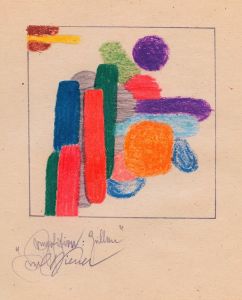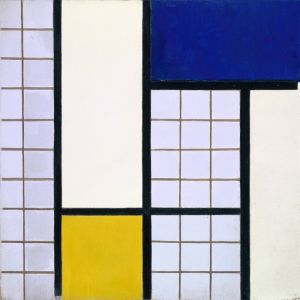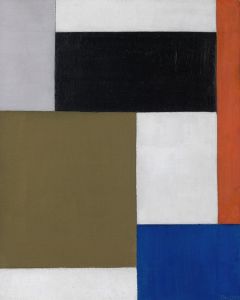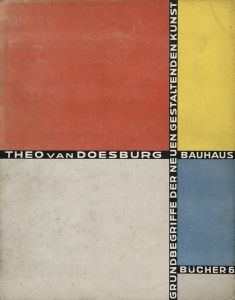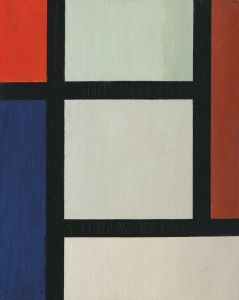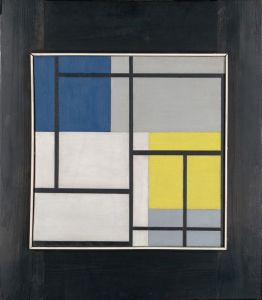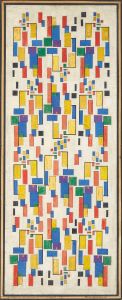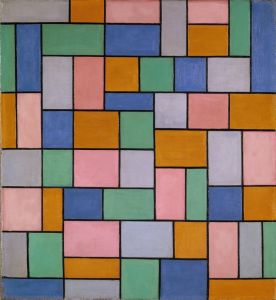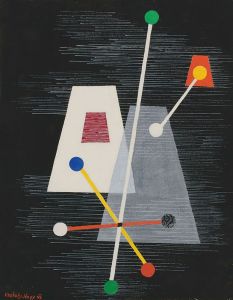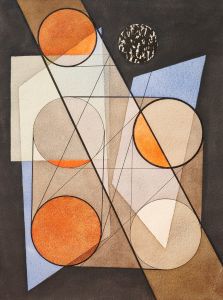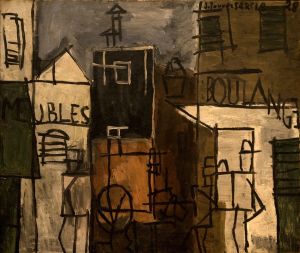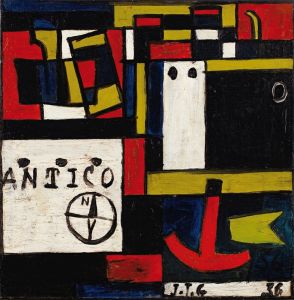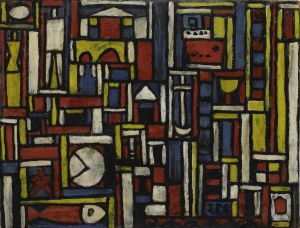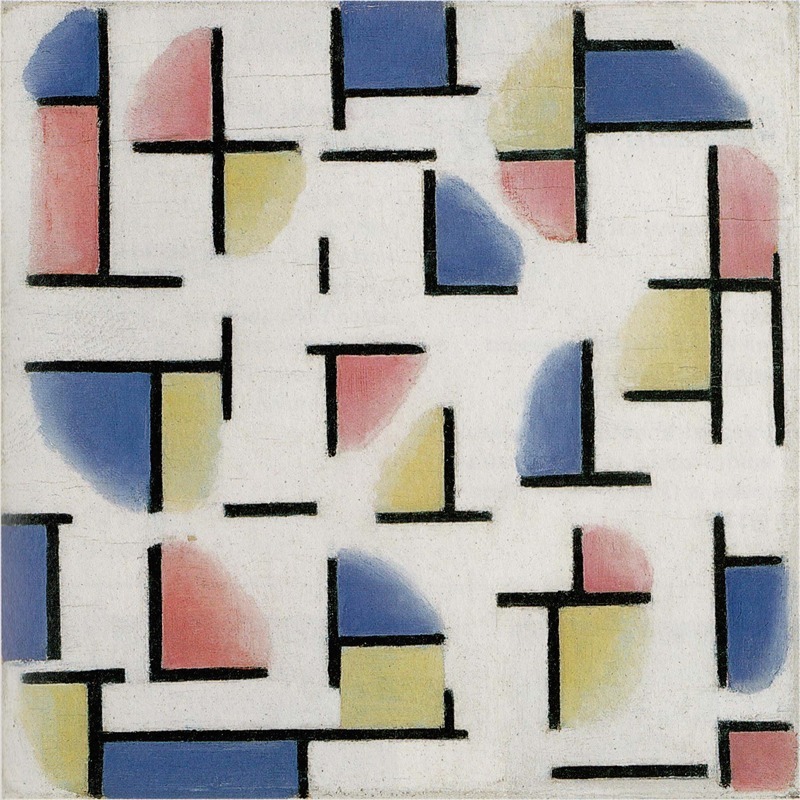
Variation on Composition XIII
A hand-painted replica of Theo van Doesburg’s masterpiece Variation on Composition XIII, meticulously crafted by professional artists to capture the true essence of the original. Each piece is created with museum-quality canvas and rare mineral pigments, carefully painted by experienced artists with delicate brushstrokes and rich, layered colors to perfectly recreate the texture of the original artwork. Unlike machine-printed reproductions, this hand-painted version brings the painting to life, infused with the artist’s emotions and skill in every stroke. Whether for personal collection or home decoration, it instantly elevates the artistic atmosphere of any space.
Theo van Doesburg, born Christian Emil Marie Küpper, was a Dutch artist, writer, and architect who played a significant role in the De Stijl movement. The De Stijl movement, also known as Neoplasticism, was founded in 1917 and is characterized by a reduction to the essentials of form and color, simplifying compositions to vertical and horizontal lines and using only black, white, and primary colors.
"Variation on Composition XIII" is one of van Doesburg's notable works. Created in 1918, this piece exemplifies the principles of the De Stijl movement. The painting features a grid of horizontal and vertical lines, creating a series of rectangular forms. The use of primary colors—red, blue, and yellow—alongside black and white, is a hallmark of the De Stijl aesthetic, emphasizing simplicity and abstraction.
Van Doesburg's work in "Variation on Composition XIII" reflects his interest in the relationship between form and color. The composition is carefully balanced, with each color and shape contributing to the overall harmony of the piece. The painting's structure is both rigid and dynamic, with the interplay of lines and colors creating a sense of movement within the static grid.
Theo van Doesburg was not only a painter but also a key theorist and promoter of the De Stijl movement. He collaborated with other prominent artists of the time, including Piet Mondrian, although their artistic philosophies eventually diverged. Van Doesburg's approach to abstraction was more dynamic and less rigid than Mondrian's, as seen in his use of diagonal lines in later works, which he termed "Elementarism."
"Variation on Composition XIII" is an important example of van Doesburg's early work and his contribution to the development of abstract art. The painting is housed in the Kröller-Müller Museum in Otterlo, Netherlands, which holds an extensive collection of works by van Doesburg and other De Stijl artists. The museum's collection provides valuable insight into the evolution of the De Stijl movement and its impact on modern art.
Van Doesburg's influence extended beyond painting; he was also involved in architecture, typography, and design. His interdisciplinary approach helped to spread the principles of De Stijl across various artistic fields, contributing to the movement's lasting legacy. "Variation on Composition XIII" remains a significant work within this context, illustrating the core ideas of simplicity, abstraction, and the harmonious use of form and color that define De Stijl.
In summary, "Variation on Composition XIII" by Theo van Doesburg is a quintessential example of the De Stijl movement's principles. The painting's use of primary colors, horizontal and vertical lines, and balanced composition reflect van Doesburg's commitment to abstraction and his role in shaping modern art. The work continues to be celebrated for its contribution to the development of abstract art and its enduring influence on contemporary artistic practices.





